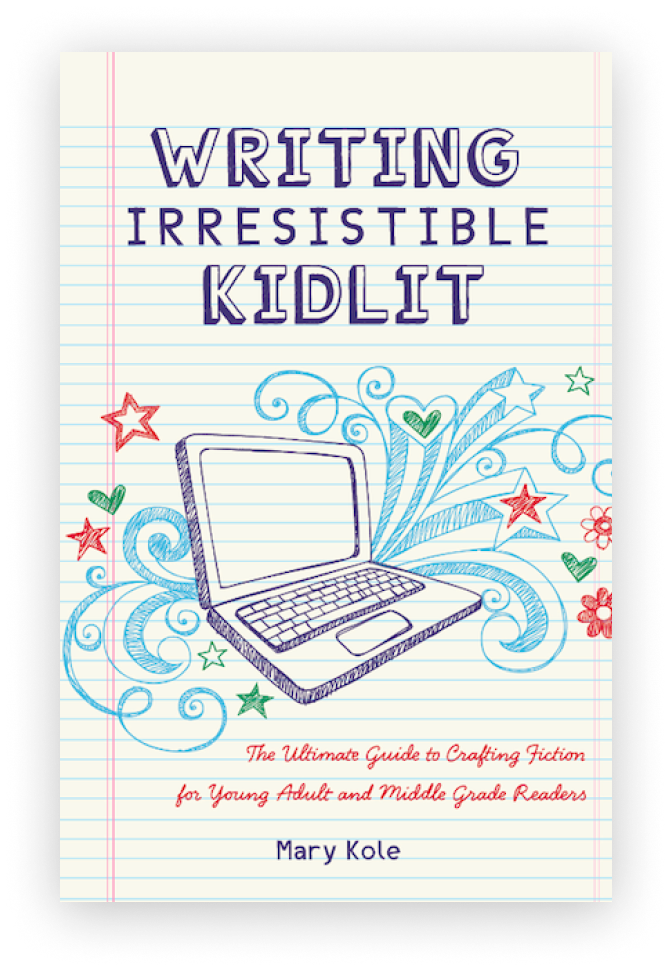The Book Revision Process
By Mary Kole
Mary Kole is a former literary agent, freelance editor, writing teacher, author of Writing Irresistible Kidlit, and IP developer for major publishers, with over a decade in the publishing industry.
As an aspiring writer, you might focus on creating our first draft and pouring our thoughts and ideas onto the page without worrying about the finer details of revision. But the true art of writing lies not in drafting, but rather in the revision process. Revision is when we polish our work, turn a good book idea into a compelling read, and evolve as writers. In this article, I’ll explore how to approach a novel revision, the tools you will want to use during a revision, the steps to follow in the revision process, and set expectations for how much revision is normal. Before we begin, let me stress that revision is an essential part of the writing process. If you aspire to create a truly great novel, you must be mature enough in your craft to take on the challenge of revision.
Starting the Revision Process
The first step in the revision process is to take a break from your draft. Getting distance from your manuscript will help you tackle the revision with fresh eyes. Let your work simmer for a few weeks before you start. This idle time is crucial, as your creative brain will keep percolating with ideas, even though you’re not actively sitting in front of your document. Once you've returned to the page, read your draft through carefully, making notes of any inconsistencies, plot holes, or moments that lack character consistency and logic. Now it's time to delve into the revision process.
The most valuable tool at your disposal here is your own mind—a willingness to re-imagine and experiment. Try plugging holes in character arcs and plot arcs by adding subplots or secondary characters that could help clarify the message or change the direction of the story. Focus on removing unnecessary clutter, tightening the narrative, adding subtext, and creating the necessary arcs.
Revision Software
Although the most crucial tool in revision is personal imagination, there are several software options available to help with the revision process. Grammarly is great for spotting typos and spelling errors. ProWriting Aid is one of the best tools for identifying passive voice and overly used words. AutoCrit highlights the areas where you can improve your work so that you can go back and refine them.
You may also want to get a second set of eyes on board, in the form of a critique partner or freelance editor. Reading your work yourself is valuable, as is using software to point out some of your blind spots, but nothing is as effective as running your draft by a qualified reader who can truly bring some fresh input to the process.
Revision Steps in Order
As you begin your revision, start with the big-picture structural issues. Start with a clean slate, ignoring what you have previously written, removing entire paragraphs, and creating new ones. Revision should be big and bold. You’re not looking at your sentence-level writing style yet. You are making big changes.
Once the big stuff is out of the way, you can start revising what is left for tone, language, and details. Be sure to scrutinize each chapter, ensuring it is serving a purpose in the overall scope of the story. Each scene and chapter needs to move both the plot forward, and the reader’s understanding of character.
Finally, you can look at the sentences, writing imagery, setting, and writing description last. Simplify and streamline sentences and words, getting rid of jargon, repetition, and anything that doesn't move the story forward. Be aware of your own blind spots and favorites, and remember to kill your darlings.
You will likely end up revising your work multiple times, and that's okay. In fact, it's ordinary for a writer to complete several rounds of revision before the final polished product is complete. Each time you revise, you grow and mature as a writer, shaping the thoughts and ideas from the previous round into the best possible version of the story you seek to tell. The key to successful revision is patience and persistence (emotional writer tools that many people don’t think about). Keep pushing yourself forward, and eventually, you will reach the peak of self-expression with your draft.
Of course, once you’ve done all of this hard work, you still need at least one proofreading round to catch any lingering typos. You’ll also do revision with a literary agent or acquiring editor at a publishing house if you get a book deal, so become comfortable with the process now.
Revising your work can be daunting, but it's a necessary and fulfilling part of the writing process. By taking the time to revise your novel, you will be able to transform a good story into a masterpiece. Remember, revision requires a willingness to experiment, and imagination. Start by taking a break, then methodically delve into each necessary task, all while staying true to your story's overall arc. Not every writer is ready to do a revolutionary revision, but by practicing now, you can grow both your own skill set, and your project.
Keep pushing forward, revising every step of the way, and before you know it, you will have created a literary work that you can be proud of. Revision is a huge part of that process.

Click here to purchase Writing Irresistible Kidlit, my book on fiction craft for MG and YA novels, out from Writer's Digest Books. This will show you my writing craft philosophy and give you lots of valuable advice, including tips for the novel revision process and self-editing. There are over 35 example novels cited and discussed throughout. It’s a valuable resource for any writer’s toolkit.
Click here to purchase Irresistible Query Letters, my book on query letters, including over forty examples with comprehensive notes on each one. There’s a ton of submission advice, best practices, and insider information in these pages, and you’ll really enjoy seeing what other writers are doing in the slush.
Click here to purchase Writing Interiority: Crafting Irresistible Characters, my book on interiority and character creation. Explore your protagonist’s thoughts, feelings, reactions and interpretations, expectations, and inner struggles to create a rich, immersive experience. This guide will empower you to create characters who live and breathe on the page, fostering an unbreakable bond with your audience.





